
As many of my regular readers will know, nearly two years ago I set out on a saga to buy an electric mini-truck from China. Now that it’s been with me for over 18 months, I’ve had the chance to put in a number of awesome upgrades to turn the truck into a true workhorse.
If you want to hear the long version of how I bought the truck, you can find that in my original article.
I recently posted a video showing off how the truck has held up during its first year and a half of near-daily work on my parents’ ranch in hot, humid, and rainy Florida.
The summary is that it’s actually been doing well. There’s almost zero rust and nothing major has broken (other than the rearview mirror falling off a few times until I finally put it on permanently with stronger glue).
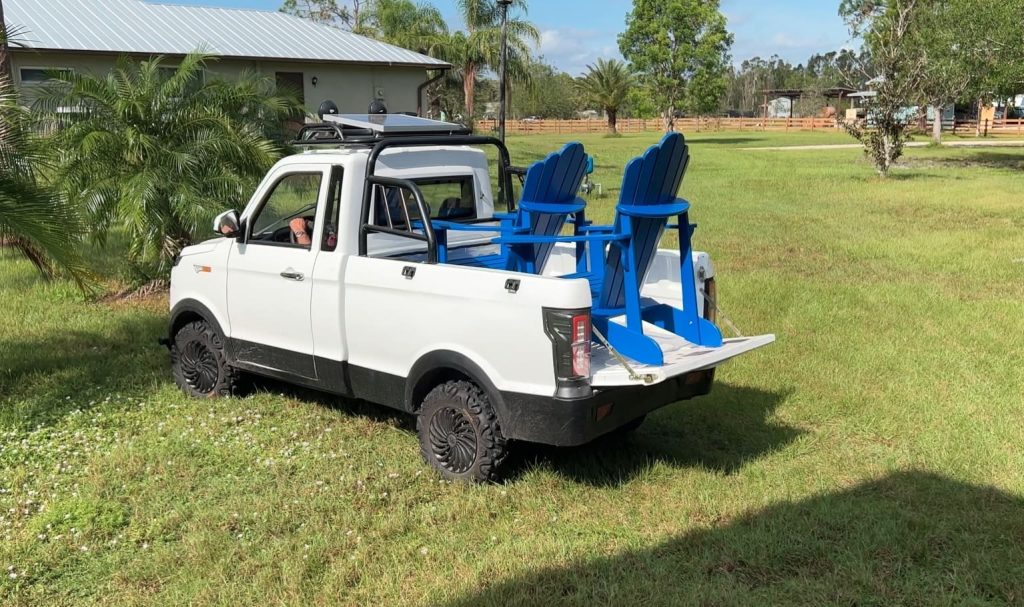
The 5:8 scale mini-truck may not be very big, but it’s held its own against six seasons of landscaping work, trash runs, furniture moving, mulch hauling, hurricane cleanup, and more.
As much as I liked the original design, there was still room for improvement. When I first got the truck, a lot of people suggested several upgrades to make it even better. So far I’ve undertaken a number of them and added a few personal touches of my own.
Here’s how I’ve turned what was already a pretty awesome electric mini-truck into the perfect ranch or hobby farm vehicle.
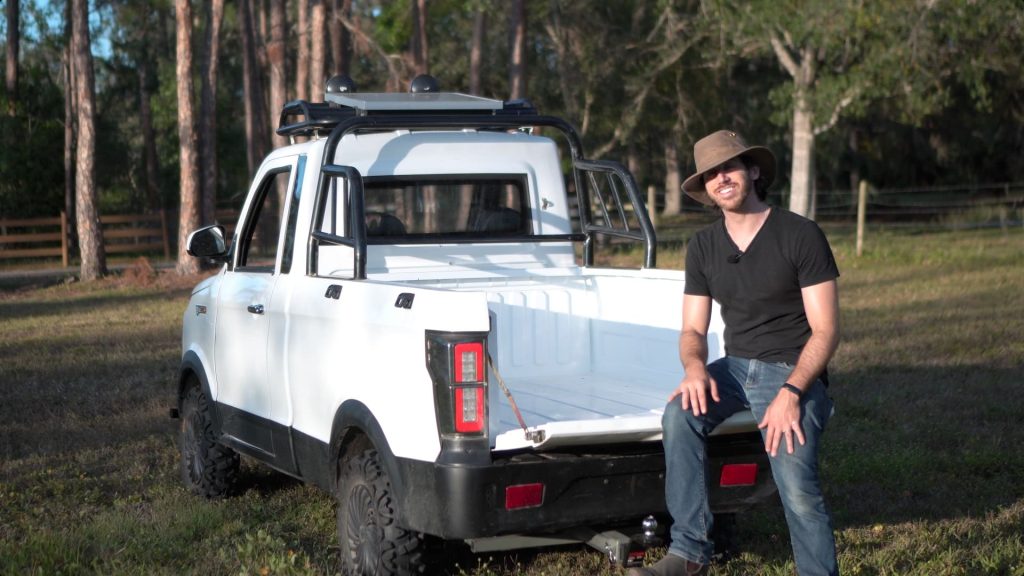
Electric mini-truck suspension upgrade
I can’t believe I waited this long to upgrade the suspension, because it was the single most obvious shortcoming of the truck. The ride might have been okay on tarmac, but since we use the truck on my parents’ ranch as a work truck in the pasture, it lives its life in a pretty bumpy environment.
The original springs were way too stiff, so my father and I pulled them out and swapped them for . I have no idea what the original springs were since they aren’t labeled, but I’m guessing they were in the ballpark of 400 lb.
That might be good if you’re carrying a couple of pianos in back, but the most I’ve had is around 700-800 lb. of dirt in the bed. So by swapping in softer springs, the truck finally had true compression and rebound instead of feeling like the frame was welded directly to the axles.
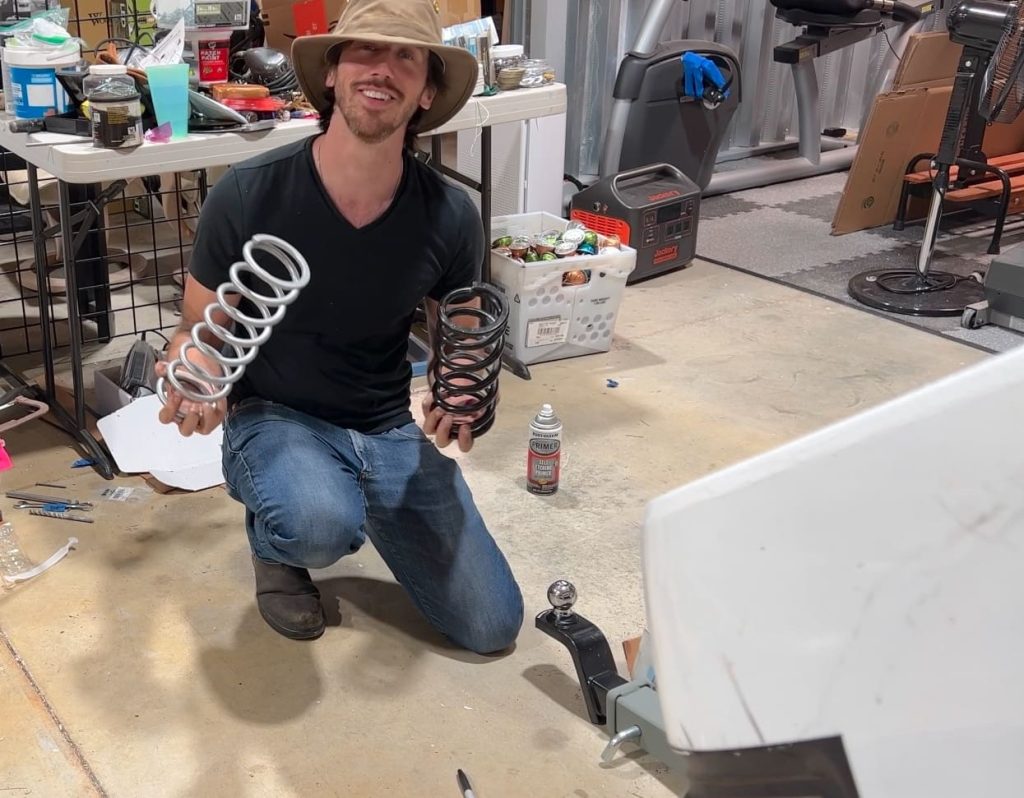
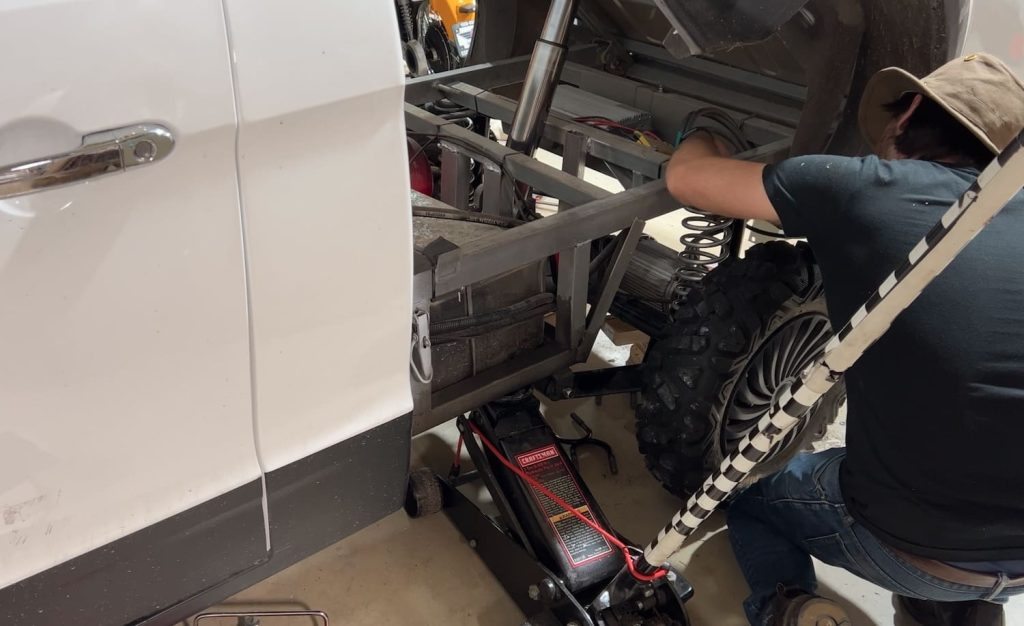
Of all the upgrades I did, this one probably had the single biggest impact on the enjoyment we get out of the mini-truck. It’s always been a great work vehicle, but now it’s a much more comfortable one, too.
Installing new off-road tires
This was another nice upgrade for our use since the truck rarely goes on the road. In fact, it probably has put 99.9% of its miles on sand or grass.
The only time we’ve used it on public roads was after a hurricane earlier this year to do a few supply runs. It’s not a street-legal vehicle, but I considered that acceptable under the emergency circumstances.
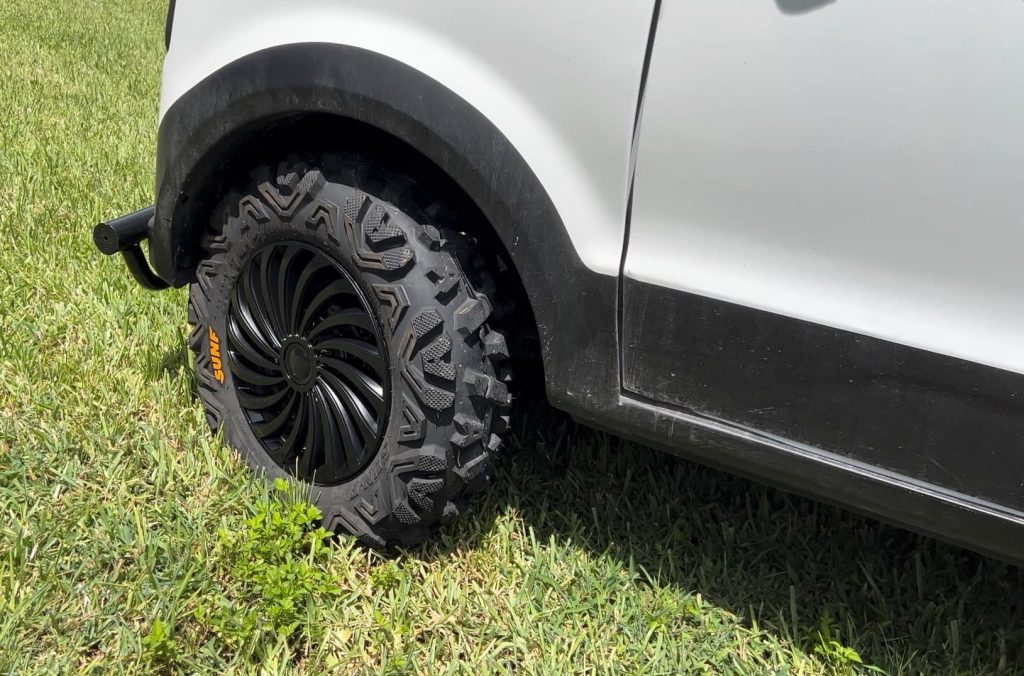
But since the original tires were street rubber and would often slip on wet grass or sand, I installed on the original wheels. Big thanks to one of my readers, Rob Fox, who sent me a link to those ATV tires. They worked perfectly! Well, almost perfectly.
The tires were slightly wider and just barely caught on the inside of the front fenders when in a full lock turn, so they probably added a couple hairs to my turning radius. Still, the upgrade was well worth it for the better ride in all the wet and dirty conditions the truck gets used in most of the time. And the truck is so darn nimble due to its narrow width that I don’t really notice the change in the steering radius much.
Oh, I also hit the hubcaps with some black spray paint. The original chrome was a bit too flashy for me, so now they’re “tactical.”
Adding a tow hitch
I’m frankly surprised the truck didn’t come with a tow hitch to begin with. It’s probably because they didn’t expect anyone to actually try and tow anything with it. But they didn’t count on me.
As a test, I had originally checked the towing capacity by tying a static climbing rope to my parents’ minivan and towing 4,000 lb. of Japanese automobile across the pasture. It worked, so I figured it could tow a 1,000 lb. utility trailer without a problem.
It would turn out that the only problem would be finding a place to install the tow hitch. There’s not much frame in the rear since the bed is a dumping bed. So I ended up welding a U-shaped bracket that I bolted to the rear axle just inside of each wheel. It’s the strongest part of the truck and made a perfect location for the hitch to bolt onto something meaty.
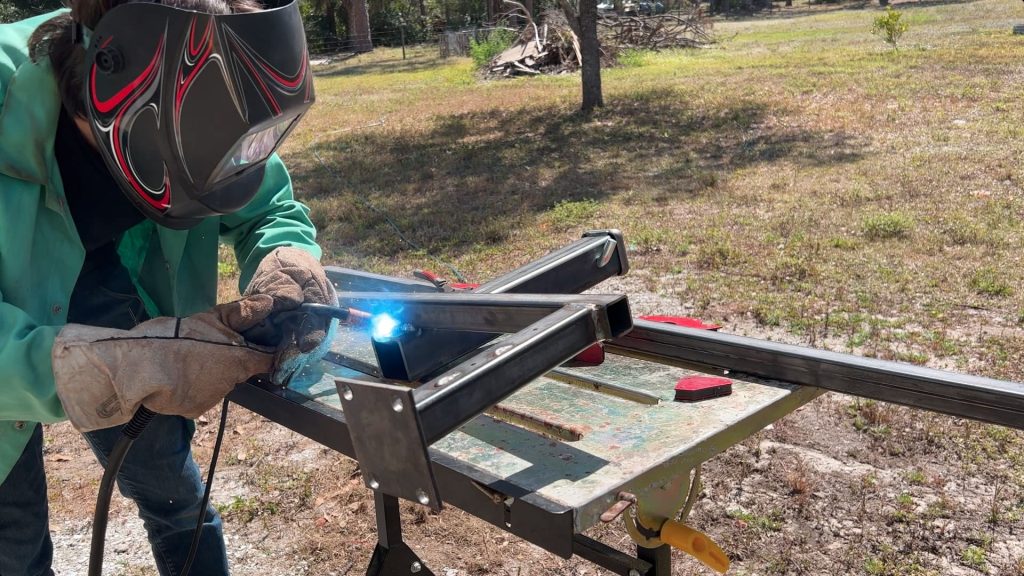
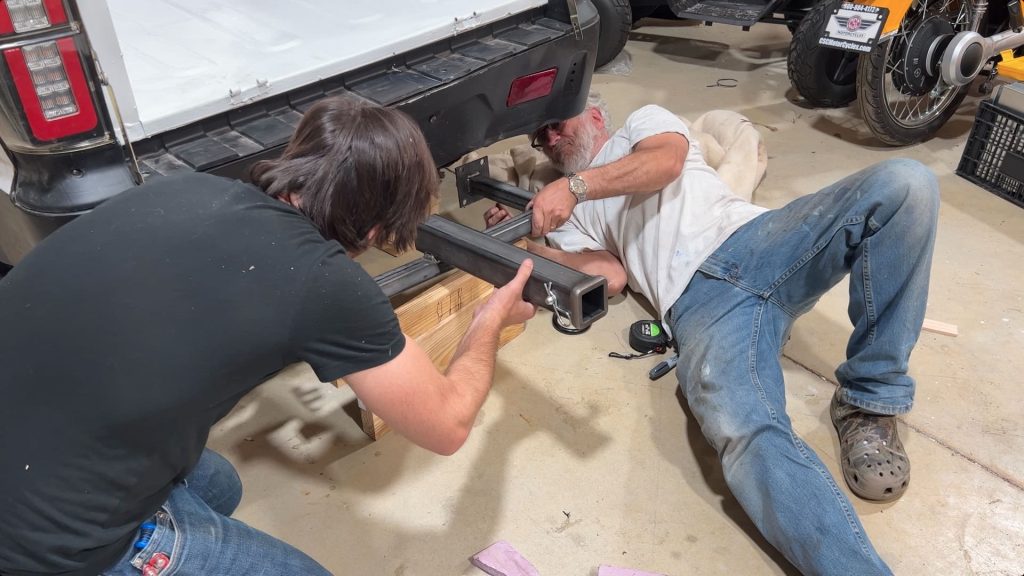
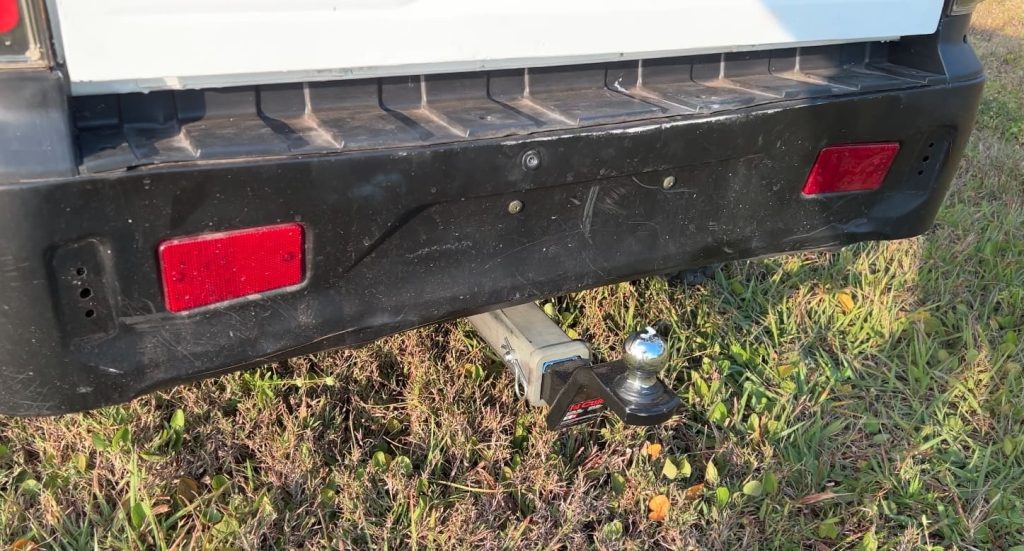
This is one piece of American design that I truly hope the Chinese will copy, because it really adds to the truck. I’m pretty happy with how it turned out and it seems to be working quite well so far.
Technically there’s no suspension for the hitch since it’s mounted on the axle, but let’s just say I’m not getting close to the truck’s 25 mph top speed while pulling a trailer full of compost across rutted-out grassland. For a utility vehicle, it seems perfect.
I can also now tow that fun 5-seater electric boat that I also ordered from China. A electric mini-truck towing an electric boat — it’s the future!
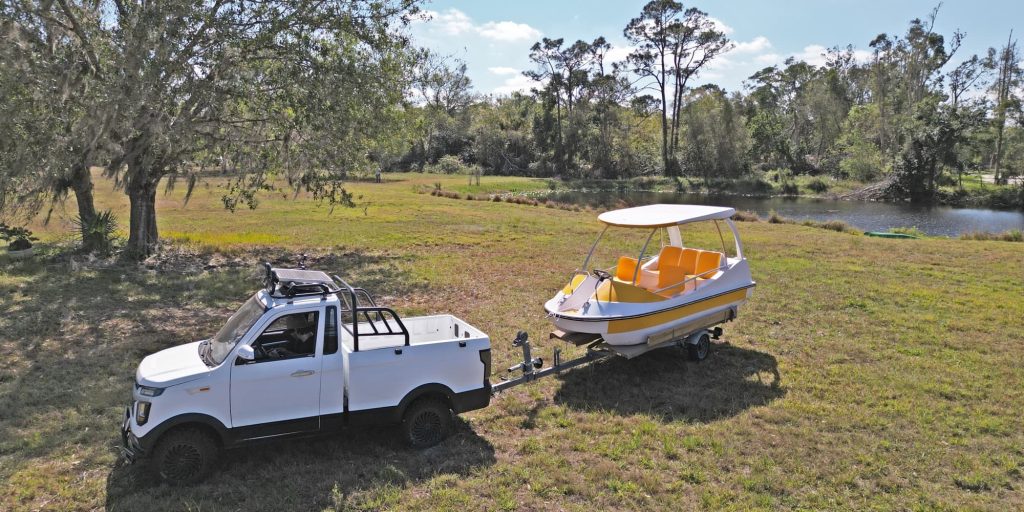
Adding solar charging to my mini-truck
This one was another no-brainer – a solar panel on the roof of the truck’s cab could help trickle charge the battery. So why not add one?
It wouldn’t make sense on a bigger electric truck like an F150 Lightning since the larger motor would mean a single solar panel would probably add enough range each day to get you down your driveway. But in our case, the small 3,000W motor is much more efficient and so the 50W solar panel I added makes a measurable difference.
Depending on the sun level, that adds a few miles of range per day in full sun.


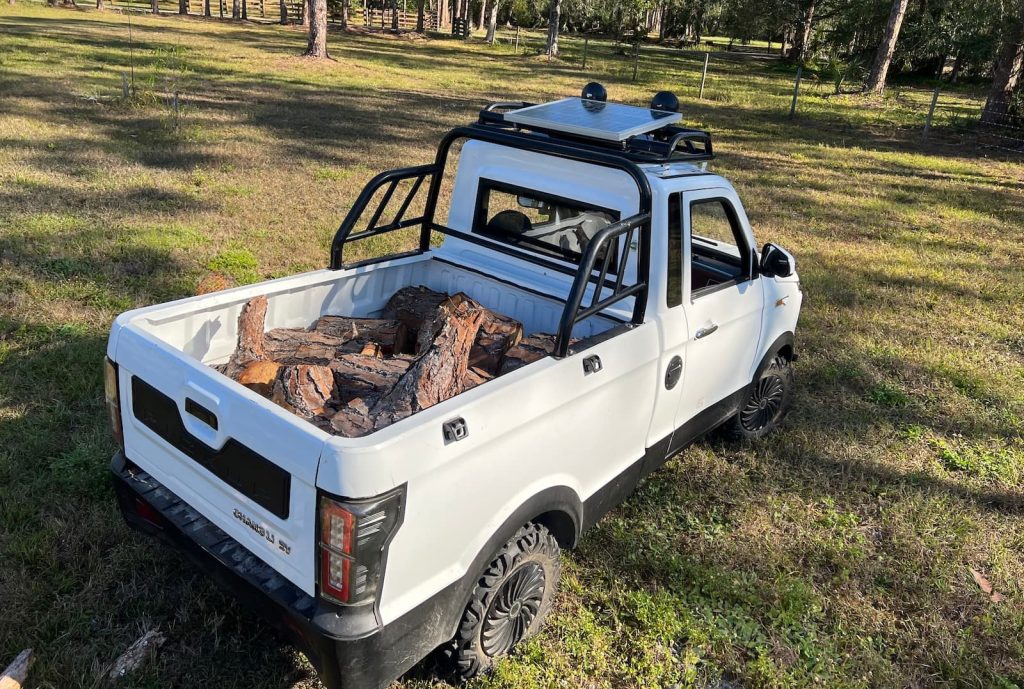
Before I installed it, we had to recharge the truck from the garage’s 110V outlets around once a week. Now we can go two to three weeks before needing a recharge since the mini-truck gets topped up a bit each time the sun comes out.
Sure, it’s not enough to go entirely off-grid (unless only using the truck for a couple of miles per day). But it is enough to push off those charges to a much less frequent pace.
Several people have told me I should have gone with a wider panel on the roof and added another on the hood. The next step up from the 50W panel I used was a 100W panel that was too wide to fit inside the cargo rails on the roof, and I didn’t want the panel to extend outside of the rails where it could be damaged. And I didn’t put a panel on the hood because, frankly, I thought it would look weird. I’m all about solar, but only to a point.
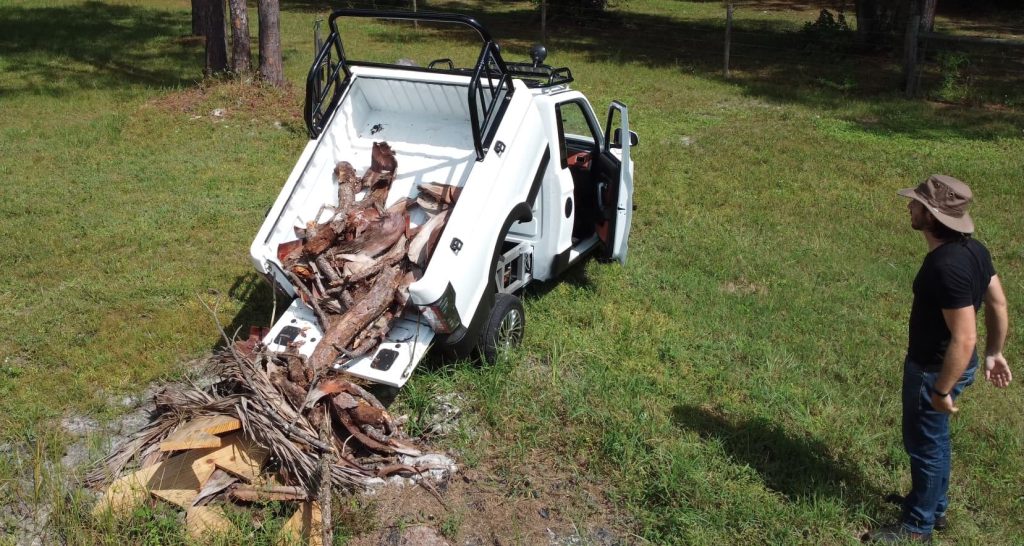
Adding a bed liner
This electric mini-truck isn’t just a show piece. It’s not a grocery getter. It’s not a kiddie carpool vehicle.
This is a work truck. In fact, I’d wager it does more work than half the “real” pickup trucks on the road these days. I see more pickup trucks hauling groceries than gear lately, underlining just how unnecessary they usually are.
But my thoughts on lifestyle trucks aside, any truck that does actual daily work tends to get worn in over time, especially if it didn’t come with a good bed liner.
After a year and a half on the ranch, the bed on my truck had more scratches than a cat wrangler.
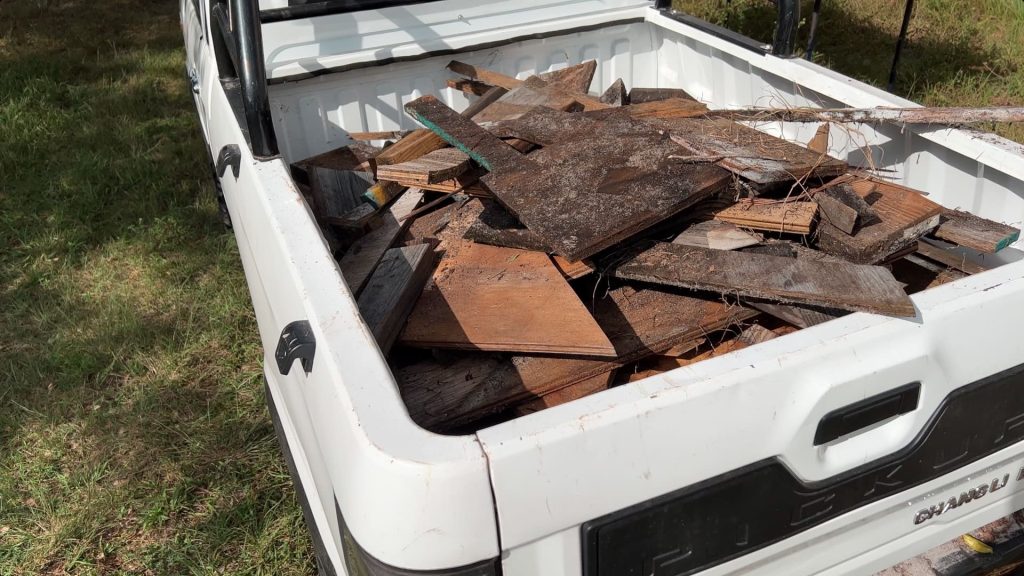
Interestingly, even the deep shovel scratches that went down through the paint to the bare metal didn’t show any signs of rust. That was amazing to me and demonstrated how well they coated the steel for anti-rust at the factory.
But it was time to toughen up that bed with some paint-in bed liner. I got a gallon of , which turned out to be more than I needed, but it did the trick.
My dad and I spent an afternoon cleaning the bed, pulling out all the plastic plugs and covers, then painting a couple coats of that stuff in. The result looks even better than when it was new. There’s now a thick, hard shell lining the bed that should be much more durable than the original factory paint.
Now the bed is even better than when the mini-truck first arrived.
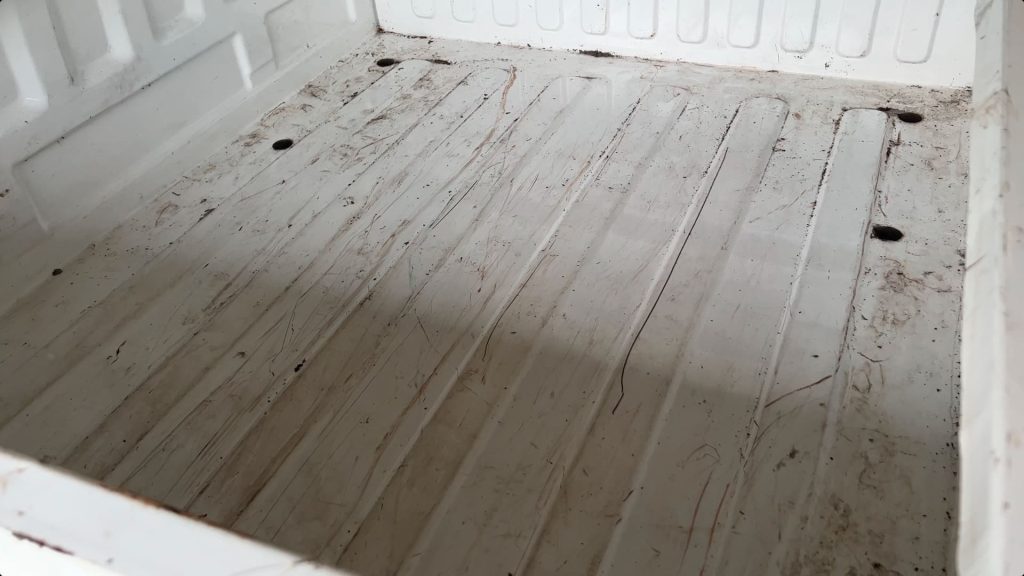
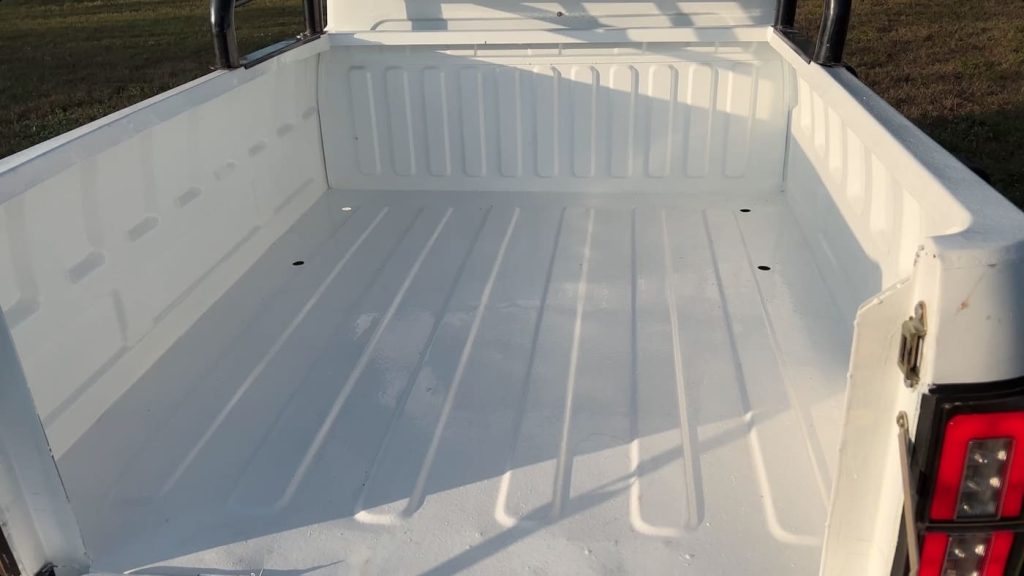
What’s next?
I’m frankly amazed at how well the truck has held up in its first year and a half. A lot of people told me it’d fall apart in weeks or rust out in months. So far, it’s done neither. It’s just been a dependable workhorse around the ranch.
I’ve done most of the projects I had planned for it and I’m not sure what other upgrades I can still add.
At this point, I’m happy to call this electric mini-truck experiment a success.
This might not be the right truck for everyone, but for some folks, it’s perfect. And our case happens to be perfect.

Author: Micah Toll
Source: Electrek



